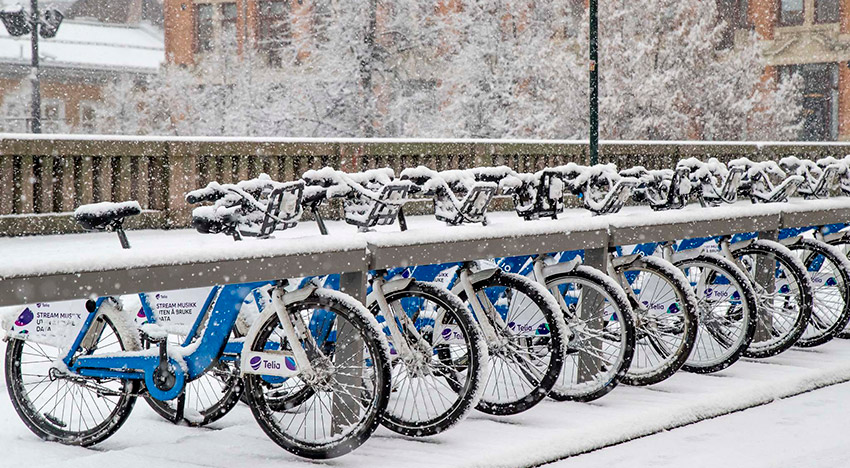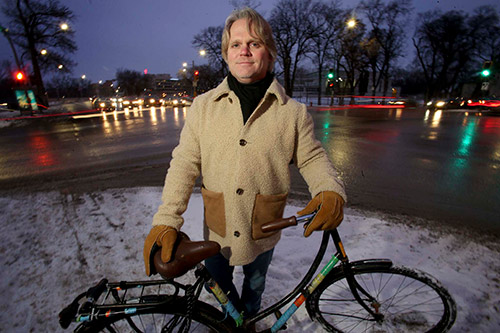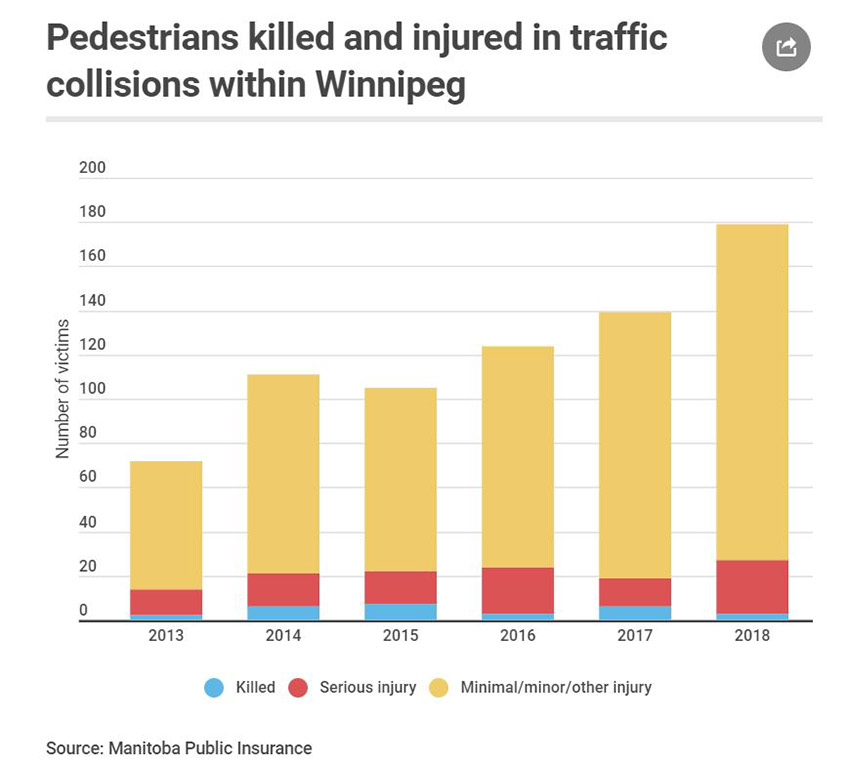Norway's capital bans cars in certain areas

By Kevin Rollason, Reporter, Winnipeg Free Press
Brent Bellamy has long called for more bike paths and pedestrian-friendly streets to make Winnipeg safer by reducing the number of fatal collisions.

(Heiko Junge/NTB scanpix via AP) City bikes covered by snow in central Oslo, after a winter snowfall. The Norwegian capital has banned cars in certain areas of the city in favour of bike-only roadways.
That’s why it wasn’t surprising for the senior design architect with Number Ten Architectural Group (who also writes a column in the Winnipeg Free Press) to take to social media Friday, pointing out different civic policies created different results in 2019. In Winnipeg, two cyclists and 13 pedestrians were killed on city streets; in similarly-sized Oslo, zero such fatalities were recorded.
There was one angle Bellamy didn’t tweet about: he could easily have been the third cyclist killed, when an inattentive SUV driver collided with him at Wellington Crescent and Academy Road in early December.
"I was so lucky," he said Friday. "(The driver) was turning and looking for an opening, and I was yelling at him but he plowed into me.
"He hit me just behind the seat. I have a Dutch bike, so I sit upright, and it was just like a tablecloth being pulled out — the bike was hit and I was left on the pavement in the same position."
Such an incident would likely not have happened had he been cycling in the Norwegian capital instead of Winnipeg, he said. One of the biggest reasons: Oslo has banned cars in certain areas of the city.
As well, Oslo has replaced almost all of its downtown parking spots with lanes for bicycles, benches to sit on, small parks to congregate in, greenery, and dropped speed limits to 30 km/hr.
"The biggest difference between the two cities is just political will — they just decided to do it and they did it," Bellamy said.
"I was there five years ago, and they had no bike lanes and they have hills — it’s not a great place to bike — but they just decided, ‘Let’s do it.’ Traffic was getting worse there, just like here. We have 15,000 more cars on the road every year. Oslo was the same," he said.
"They decided they could build expensive big roads or they could ban cars, build 15 kilometres of bike trails each year, and expand public transit — and it has worked."
Bellamy pointed to a tweet by Anders Hartmann, who works on policies for walking, cycling and road safety in Oslo, which had information on the number of road deaths in the city.
Hartmann, after noting, "This makes me happy," pointed to a graph that shows road deaths in Oslo, now with a population of 673,000, has not only been going down since 1975 (41), but has dramatically fallen since about 2007.
Hartmann also noted the only fatality in traffic last year involved a driver who died after a car struck a railing at a light rail station. No children died in a traffic-related death in Norway in 2019.
Still, Hartmann posted it doesn’t mean Oslo had reached Vision Zero, a global traffic project aimed at having no fatalities or serious injuries caused by vehicles. It began in Sweden in 1997, and the City of Winnipeg has since adopted it.
"While we are making great progress, there is still a way to go to consistently keep deaths at zero for all road users," he said.
Marc Cohoe, executive director of Bike Winnipeg, said the Nordic countries and the Netherlands are at the forefront of Vision Zero, and he would like to see Winnipeg follow their lead.
"The numbers show if you use that pathway, the results are there," Cohoe said.
"The numbers of people killed in a collision over there is miniscule compared to the numbers in North America. Losing 13 or 15 people on our streets isn’t acceptable. Why do we accept it on our roads, but we wouldn’t in the workplace? I’m hoping we can do more with the city’s transportation master plan this year.
"Over there, they say five minutes of inconvenience isn’t worth the lives we are losing — we will still get around. And they have buy-in from the general population."
kevin.rollason@freepress.mb.ca
Kevin Rollason is one of the more versatile reporters at the Winnipeg Free Press. Whether it is covering city hall, the law courts, or general reporting, Rollason can be counted on to not only answer the 5 Ws — Who, What, When, Where and Why — but to do it in an interesting and accessible way for readers.


